Related Research Articles
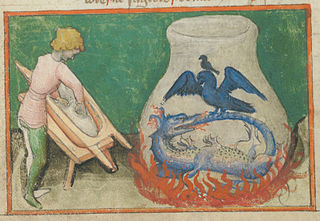
Alchemy is an ancient branch of natural philosophy, a philosophical and protoscientific tradition that was historically practised in China, India, the Muslim world, and Europe. In its Western form, alchemy is first attested in a number of pseudepigraphical texts written in Greco-Roman Egypt during the first few centuries AD. Greek-speaking alchemists often referred to their craft as "the Art" (τέχνη) or "Knowledge" (ἐπιστήμη), and it was often characterised as mystic (μυστική), sacred (ἱɛρά), or divine (θɛíα).
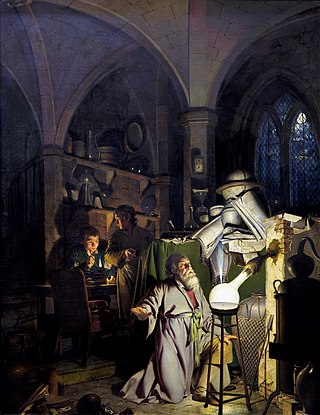
The philosopher's stone is a mythic alchemical substance capable of turning base metals such as mercury into gold or silver; it was also known as "the tincture" and "the powder". Alchemists additionally believed that it could be used to make an elixir of life which made possible rejuvenation and immortality.

Sir Thomas Browne was an English polymath and author of varied works which reveal his wide learning in diverse fields including science and medicine, religion and the esoteric. His writings display a deep curiosity towards the natural world, influenced by the Scientific Revolution of Baconian enquiry and are permeated by references to Classical and Biblical sources as well as the idiosyncrasies of his own personality. Although often described as suffused with melancholia, Browne's writings are also characterised by wit and subtle humour, while his literary style is varied, according to genre, resulting in a rich, unique prose which ranges from rough notebook observations to polished Baroque eloquence.

Sir Edward Kelley or Kelly, also known as Edward Talbot, was an English Renaissance occultist and scryer. He is known for working with John Dee in his magical investigations. Besides the professed ability to see spirits or angels in a "shew-stone" or mirror, which John Dee so valued, Kelley also said that he possessed the secret of transmuting base metals into gold, the goal of alchemy, as well as the philosopher's stone itself.
The 1711 Sales Auction Catalogue of the Library of Sir Thomas Browne highlights the erudition of the physician, philosopher and encyclopedist, Sir Thomas Browne (1605-1682). It also illustrates the proliferation, distribution and availability of books printed throughout 17th century Europe which were purchased by the intelligentsia, aristocracy, priest, physician and educated merchant-class.
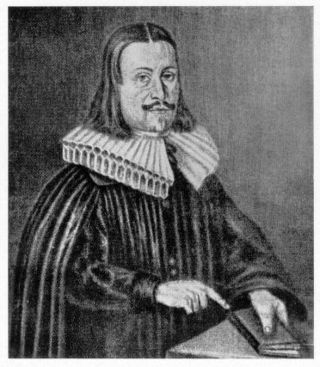
Andreas Libavius or Andrew Libavius was born in Halle, Germany c. 1550 and died in July 1616. Libavius was a renaissance man who spent time as a professor at the University of Jena teaching history and poetry. After which he became a physician at the Gymnasium in Rothenburg and later founded the Gymnasium at Coburg. Libavius was most known for practicing alchemy and writing a book called Alchemia, one of the first chemistry textbooks ever written.

Fasciculus Chemicus or Chymical Collections. Expressing the Ingress, Progress, and Egress, of the Secret Hermetick Science out of the choicest and most famous authors is an anthology of alchemical writings compiled by Arthur Dee (1579–1651) in 1629 while resident in Moscow as chief physician to Czar Michael I of Russia.
The year 1629 in science and technology involved some significant events.
In alchemy, nigredo, or blackness, means putrefaction or decomposition. Many alchemists believed that as a first step in the pathway to the philosopher's stone, all alchemical ingredients had to be cleansed and cooked extensively to a uniform black matter.
Artephius is a writer to whom a number of alchemical texts are ascribed. Although the roots of the texts are unclear and the identity of their author obscure, at least some of them are Arabic in origin. He is named as the author of several books, the Ars sintrillia, Clavis sapientiae or Clavis maioris sapientiae, and Liber secretus.
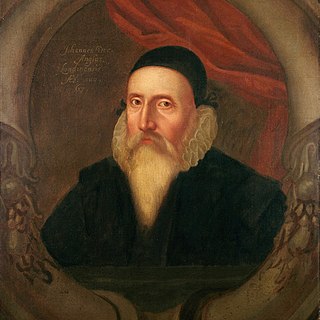
John Dee was an English mathematician, astronomer, teacher, astrologer, occultist, and alchemist. He was the court astronomer for, and advisor to, Elizabeth I, and spent much of his time on alchemy, divination, and Hermetic philosophy. As an antiquarian, he had one of the largest libraries in England at the time. As a political advisor, he advocated the foundation of English colonies in the New World to form a "British Empire", a term he is credited with coining.
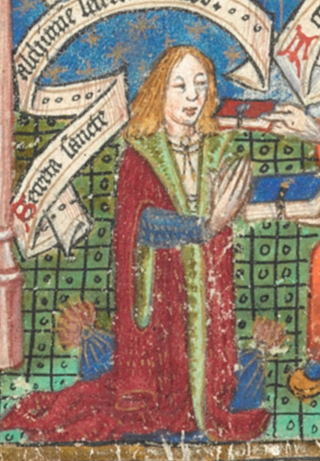
Thomas Norton was an English poet and alchemist best known for his 1477 alchemical poem, The Ordinal of Alchemy.
John Dastin (c.1293-c.1386) was an English alchemist of the fourteenth century. Little is known of his life beyond the texts which are attributed to him. Dastin is known for correspondence with Pope John XXII and Cardinal Napoleone Orsini in defense of alchemical practice, dated to 1320.

Sir George Ripley was an English Augustinian canon, author, and alchemist.

Robert Paston, 1st Earl of Yarmouth, FRS was an English scientist and politician who sat in the House of Commons between 1660 and 1673 when he was created Viscount Yarmouth. He was created Earl of Yarmouth in 1679.

Thomas Wharton (1614–1673) was an English physician and anatomist best known for his descriptions of the submandibular duct and Wharton's jelly of the umbilical cord.
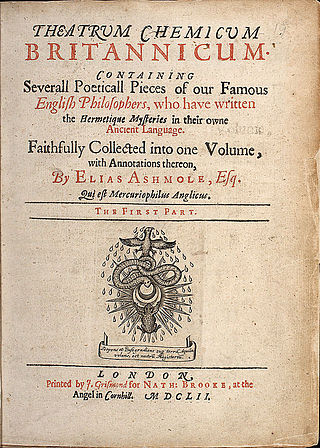
Theatrum Chemicum Britannicum first published in 1652, is an extensively annotated compilation of English alchemical literature acquired by Elias Ashmole. The book preserved and made available many works that had previously existed only in privately held manuscripts. It is the first part of a planned multi-volume set. It contains the rhyming verse of many alchemists, poets, mathematicians &c, such as Thomas Norton, George Ripley, Geoffrey Chaucer, John Gower, John Dee, Edward Kelley, John Lydgate, John Dastin and William Backhouse.
The year 1579 in science and technology included a number of events, some of which are listed here.

János Bánfihunyadi, better known by his Latinized name Johannes Banfi Hunyades or his pseudonym Hans Hungar, was a Hungarian alchemist, chemist and metallurgist. He emigrated to England in 1608 and built a reputation among the academic circles of England and Hungary, associating with such figures as the alchemist Arthur Dee, astrologer William Lilly, physician Jonathan Goddard and scientist Kenelm Digby.
References
- Charlotte Fell-Smith, John Dee (1909) Constable & Company, London .
 This article incorporates text from a publication now in the public domain : "Dee, Arthur". Dictionary of National Biography . London: Smith, Elder & Co. 1885–1900.
This article incorporates text from a publication now in the public domain : "Dee, Arthur". Dictionary of National Biography . London: Smith, Elder & Co. 1885–1900.
- ↑ Bautz, Annika; Gregory, James, eds. (3 May 2018). "Chapter 3. 'A Paradise & Cabinet of Rarities'. Thomas Browne, His Library, and Communities of Collecting in Seventeenth-Century Norfolk by Lucy Gwynn". Libraries, Books, and Collectors of Texts, 1600-1900. ISBN 9780429952395. 1st page of chapter
- ↑ Peter French, John Dee, London: RKP, 1972, reprint 2013.
- 1 2 Durn, Sarah (11 November 2021). "How Scholars Cracked a Medieval Alchemist's Secret Code". Atlas Obscura. Archived from the original on 18 November 2021. Retrieved 18 November 2021.
- ↑ Charlotte Fell-Smith, John Dee, Constable & Company, London (1909).
- ↑ Arthur Dee Fasciculus Chemicus translated by Elias Ashmole, edited Lyndy Abraham, Routledge, New York and London 1997.